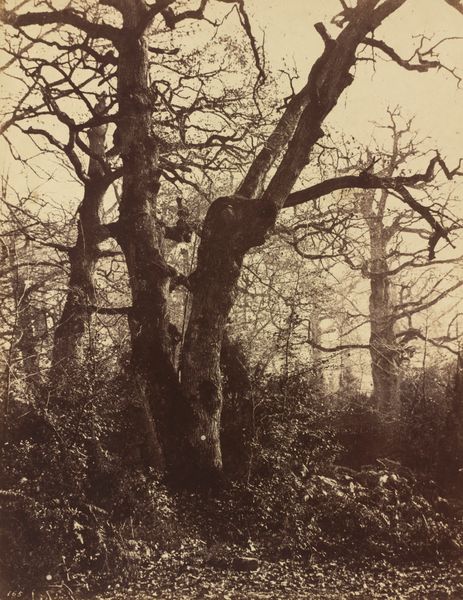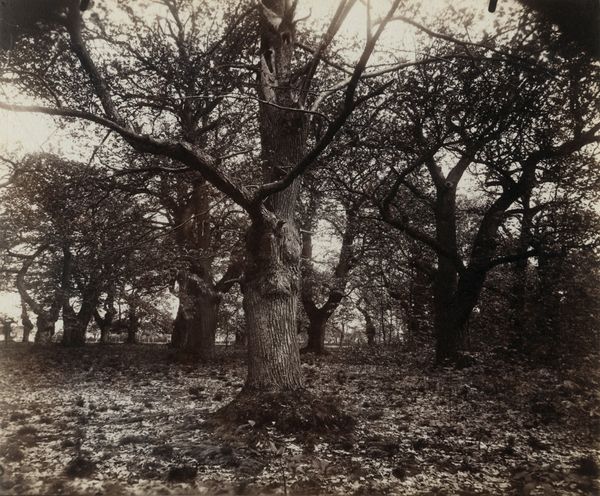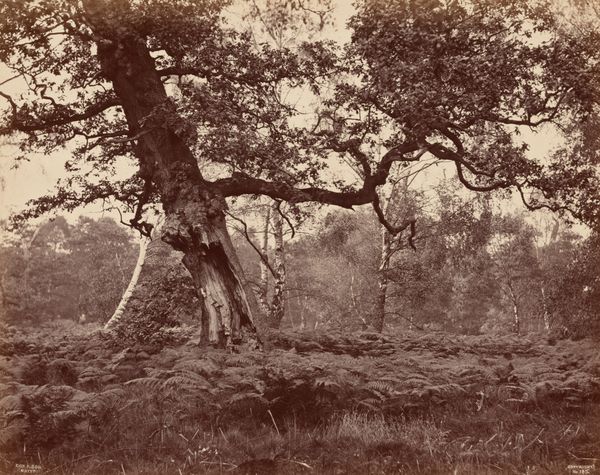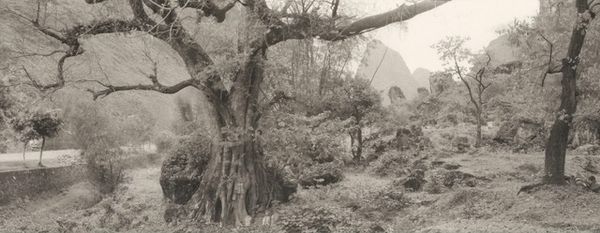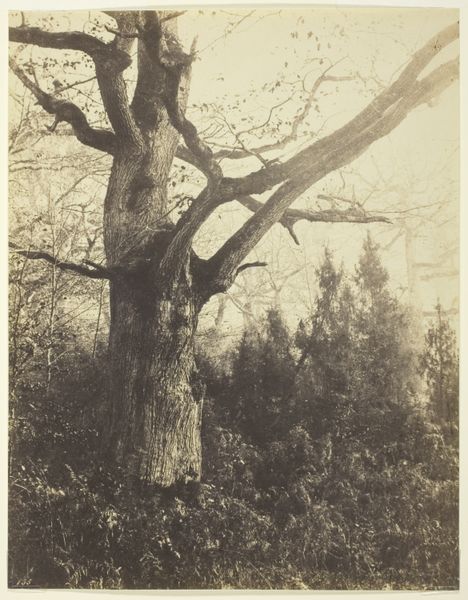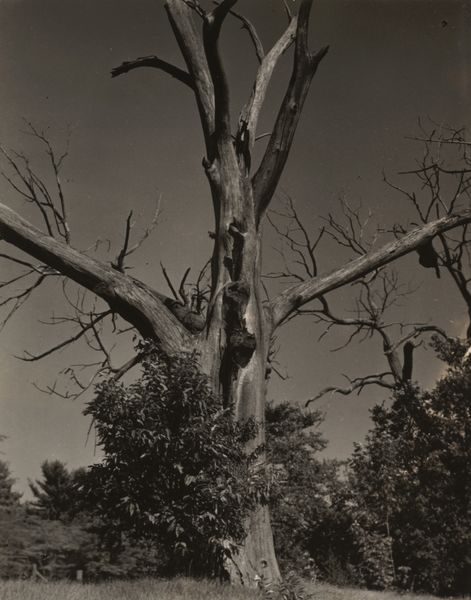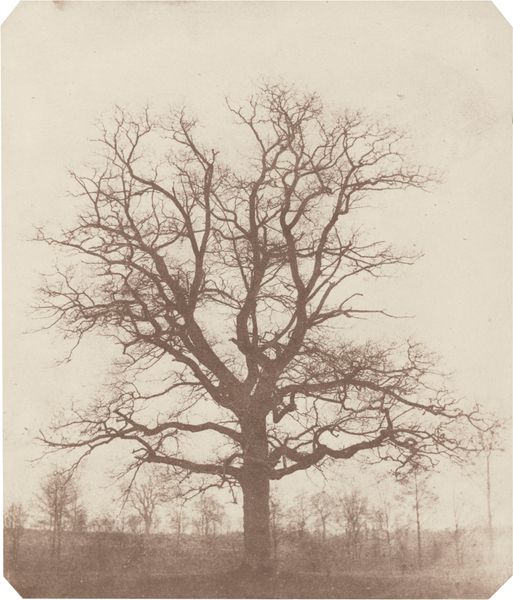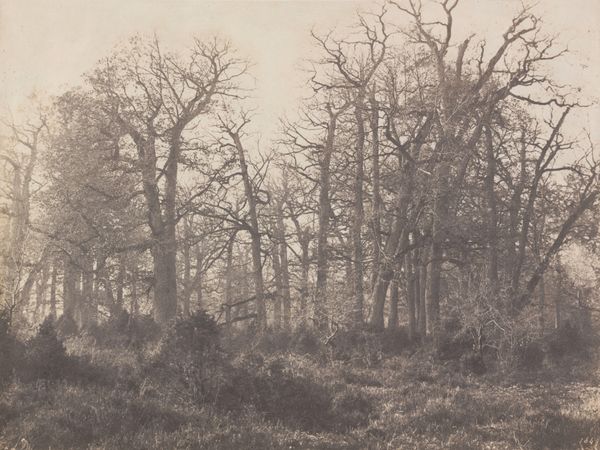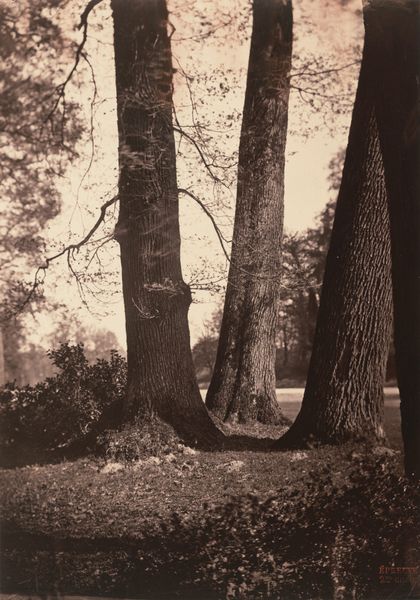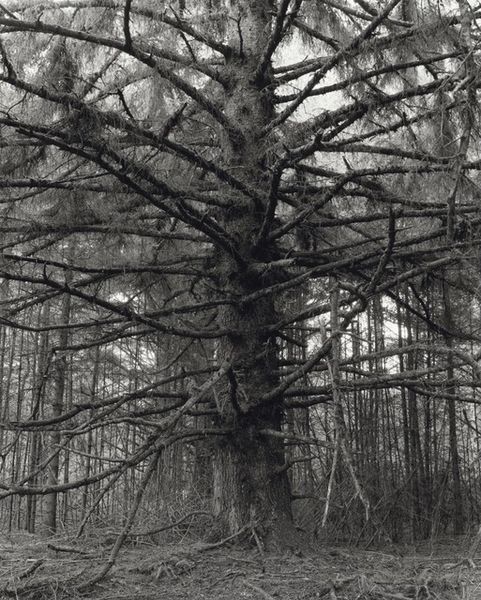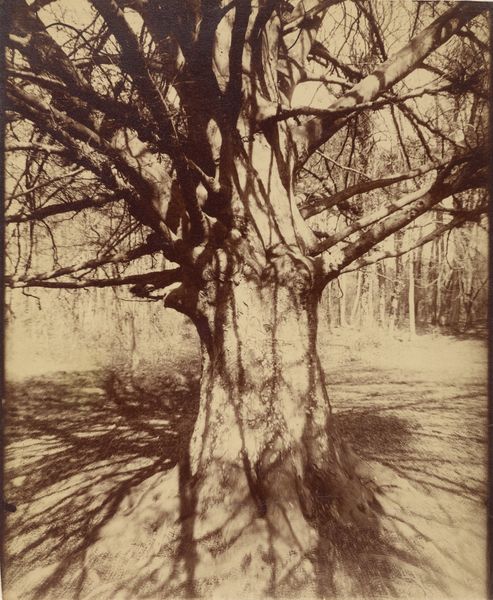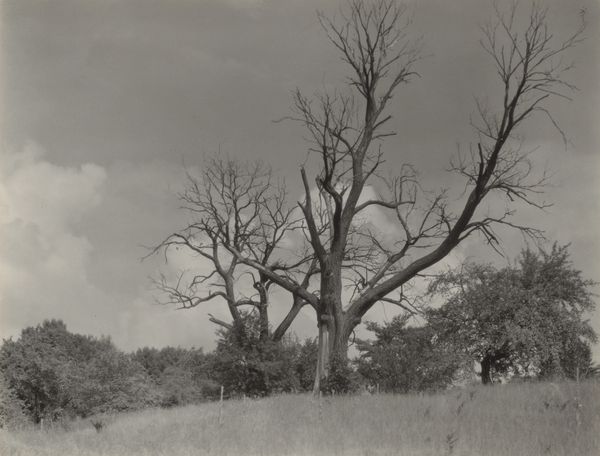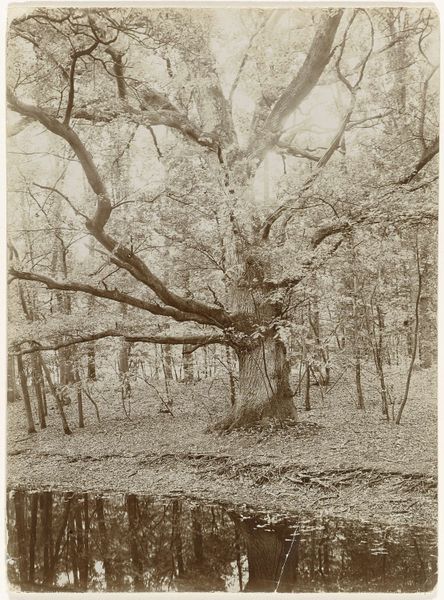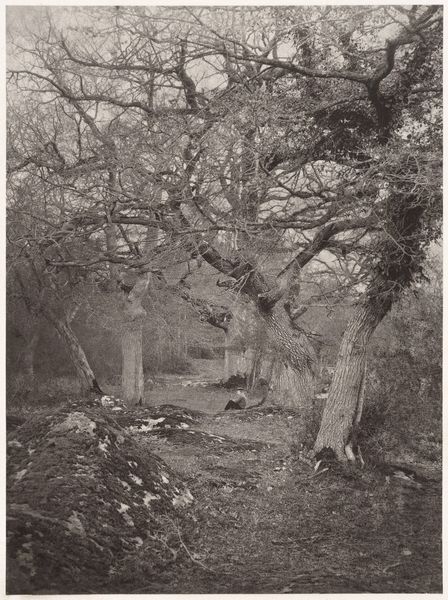
plein-air, photography, albumen-print
#
solitude
#
natural shape and form
#
snowscape
#
countryside
#
impressionism
#
organic shape
#
plein-air
#
landscape
#
nature
#
photography
#
outdoor scenery
#
nature heavy
#
naturalism
#
albumen-print
#
natural form
#
shadow overcast
Dimensions: image: 26.04 x 20 cm (10 1/4 x 7 7/8 in.) mount: 57.15 x 49.53 cm (22 1/2 x 19 1/2 in.)
Copyright: National Gallery of Art: CC0 1.0
Eugène Cuvelier made this photograph, Près du Bodmer, using the calotype process, which was something of a halfway point between painting and modern photography. Think about the materiality of this image. Paper is the base, made from pulped plant fibres. This was then sensitized with chemistry, placed in a large format camera, and exposed to light. It's a direct impression of light, but unlike later photographic processes, the calotype yields a somewhat soft, hazy image. What we're seeing here is an aesthetic that's neither purely mechanical, nor entirely handmade. This area, the Forest of Fontainebleau, was a retreat for artists escaping the industrializing city. They looked to the landscape for inspiration, engaging with the local environment and the changing seasons, to create a sense of beauty that was deeply rooted in place and time. Looking at this image, we can consider how photography was used not just to record, but to interpret the natural world, and to suggest a way of seeing that valued atmosphere and feeling over precise detail. It invites you to contemplate the intersection of nature, technology, and artistic expression.
Comments
No comments
Be the first to comment and join the conversation on the ultimate creative platform.
